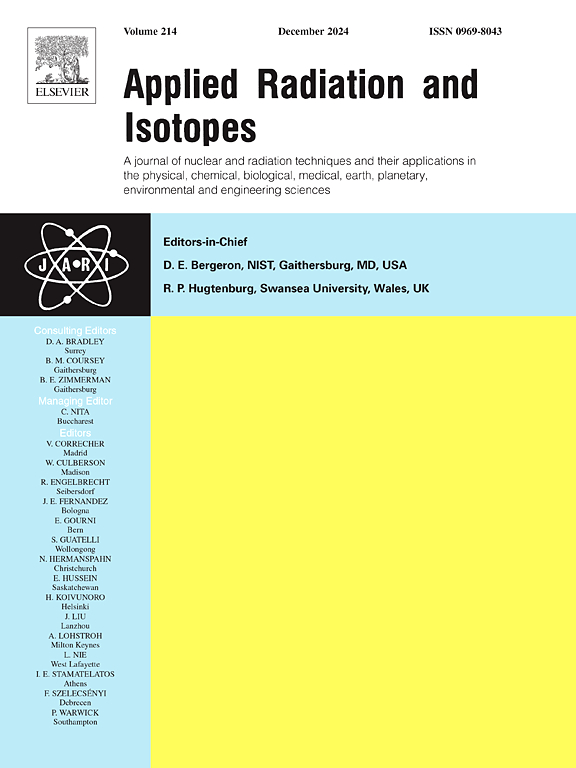开发带有反重合探测器的 TDCR 计数系统
IF 1.6
3区 工程技术
Q3 CHEMISTRY, INORGANIC & NUCLEAR
引用次数: 0
摘要
在采用 TDCR 方法对低活度液体闪烁样品进行标准化时,系统背景的波动会对测量的不确定性和最小可探测活度(MDA)产生重大影响。为了减轻这种影响,我们开发了一种带有反共振探测器的 TDCR 计数系统。通过分析反入射通道和 β 通道之间的时差分布谱,确定了反入射模块的最佳参数。这项研究的目的是提高反重合技术的有效性,同时尽量减少对真实事件的去除。最后,通过稀释法制备了两组已知放射性活度约为 1 Bq 的 3H 和 14C 样品,以验证系统的性能。与不使用反共振技术相比,本底降低了近 84%,从而减少了放射性活度结果的波动。本文章由计算机程序翻译,如有差异,请以英文原文为准。
Development of a TDCR counting system with anti-coincidence detectors
When employing the TDCR method for standardization of low-activity liquid scintillation samples, fluctuations in system background can significantly impact both measurement uncertainties and minimum detectable activity (MDA). To mitigate this impact, a TDCR counting system with anti-coincidence detectors was developed. By analyzing the time difference distribution spectrum between the anti-coincidence channel and β channel, optimal parameters for the anti-coincidence module are determined. The objective of the study is to enhance the effectiveness of the anti-coincidence technique while minimizing the removal of real events. Finally, two sets of 3H and 14C samples with known activities of around 1 Bq are prepared via dilution to validate the performance of the system. Compared to without anti-coincidence, the background has been reduced by nearly 84%, leading to decreased fluctuations in the activity results.
求助全文
通过发布文献求助,成功后即可免费获取论文全文。
去求助
来源期刊

Applied Radiation and Isotopes
工程技术-核科学技术
CiteScore
3.00
自引率
12.50%
发文量
406
审稿时长
13.5 months
期刊介绍:
Applied Radiation and Isotopes provides a high quality medium for the publication of substantial, original and scientific and technological papers on the development and peaceful application of nuclear, radiation and radionuclide techniques in chemistry, physics, biochemistry, biology, medicine, security, engineering and in the earth, planetary and environmental sciences, all including dosimetry. Nuclear techniques are defined in the broadest sense and both experimental and theoretical papers are welcome. They include the development and use of α- and β-particles, X-rays and γ-rays, neutrons and other nuclear particles and radiations from all sources, including radionuclides, synchrotron sources, cyclotrons and reactors and from the natural environment.
The journal aims to publish papers with significance to an international audience, containing substantial novelty and scientific impact. The Editors reserve the rights to reject, with or without external review, papers that do not meet these criteria.
Papers dealing with radiation processing, i.e., where radiation is used to bring about a biological, chemical or physical change in a material, should be directed to our sister journal Radiation Physics and Chemistry.
 求助内容:
求助内容: 应助结果提醒方式:
应助结果提醒方式:


